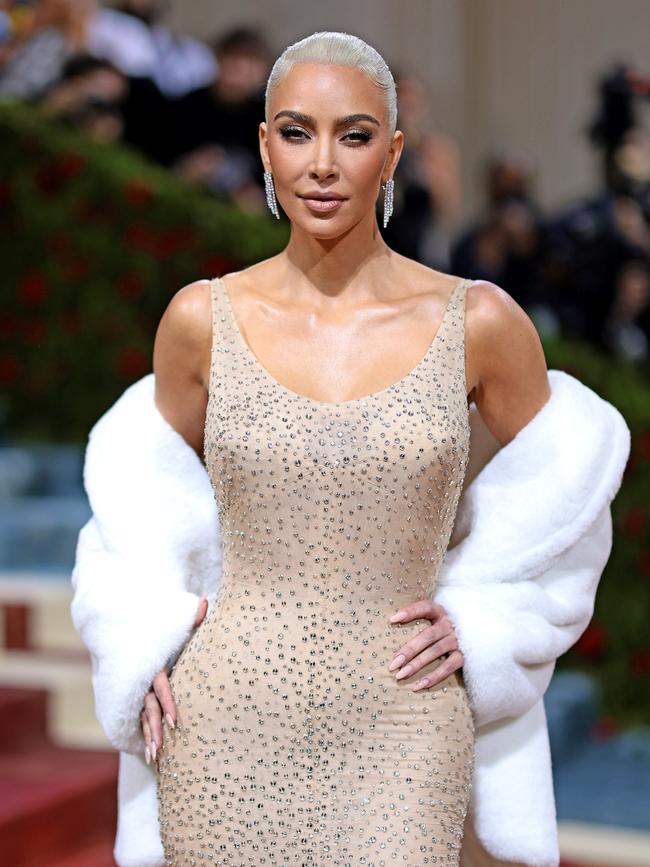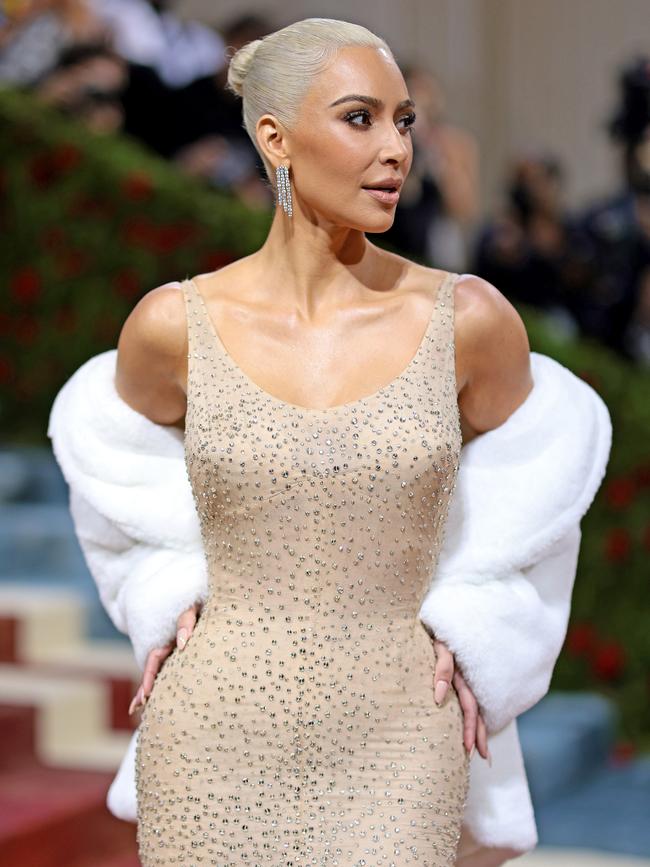Why Kim Kardashian’s Met Gala look sent dangerous message
Kim Kardashian was always going to steal the show at this year’s Met Gala – but her “iconic” look sent a troubling message.
Lifestyle
Don't miss out on the headlines from Lifestyle. Followed categories will be added to My News.
Kim Kardashian was always going to steal the show at this year’s Met Gala.
From the moment the reality star was spotted in Florida last week, at Ripley’s Believe It Or Not Museum, speculation was rife over whether her interpretation of this year’s theme, In America: An Anthology of Fashion, and its gilded glamour dress code would involve donning Marilyn Monroe’s iconic Jean Louis gown from 1962.
The infamous glittering number – purchased by Ripley’s for $6.8 million in 2016 – hadn’t been worn since Monroe’s Happy Birthday JFK serenade 60 years ago.
So when Kardashian stepped onto the red carpet of New York’s Metropolitan Museum of Art wearing, yes, the original dress, her hair platinum blonde and perfectly coiffed, the internet promptly lost their minds.
It was an “iconic” move, social media users and fashion critics declared; a “milestone in Met Gala history”.
That was until the 41-year-old revealed – in a subsequent Vogue profile about how the look came together, and again in an interview at the top of the carpet – the extreme lengths she’d gone to in order to pull it off.


“I tried it on, and it didn’t fit me. And so I looked at it, and I said ‘give me three weeks’,” Kardashian toldVogue correspondent for the night, LaLa Anthony.
“I had to lose 16 pounds (7kg) to be able to fit this, but it was such a challenge. I was determined to fit it.”
The exchange took on an almost congratulatory tone – with Anthony joking about Kardashian’s ability to do anything that she “puts her mind to” – but it sent a dangerous message that, as Nicola Dall’Asen put it in a piece for Allure, “drastic weight loss isn’t just possible; it’s easy, and it’s glamorous”.
“Kim Kardashian proudly saying she went on an extreme diet to lose a stone in three weeks to fit into a dress she was only allowed to wear for less than 10 minutes is frankly disgusting and irresponsible and unhinged but hey what do I know,” body image advocate and UK writer Stephanie Yeboah wrote on Twitter.
“You have daughters who are growing up and seeing that behaviour as normal. Bloody hell.
“I’m sorry but there is nothing safe or healthy about forcing oneself to lose a bit over a stone in 3 weeks. It’s disordered and the way it’s being normalised in the press this morning is grotesque.”
It’s important to acknowledge, the Butterfly Foundation’s Communications Manager Alex Cowen told news.com.au, that “celebrities like Kim are just as much a victim of diet culture and the influence of the media as we are”.
i simply never need to hear about any celebrity losing weight to fit into anything ever again, thank you
— Tyler McCall (@eiffeltyler) May 3, 2022
Every generation has their touchstones they come back to again and again - the things they convinced them dieting was a game they could “win†if they just had the will power, sources of incredible shame and self-hatred and bodily abuse. This is what Kim has reproduced.
— Anne Helen Petersen (@annehelen) May 3, 2022
Kim Kardashian looked beautiful at the Met Gala, but she has promoted unrealistic body standards for YEARS (diet teas, waist trainers, $$$ procedures, etc) and her talking about losing 16 lbs in 3 weeks to fit into Marilyn's dress (which no one should get to wear) is appalling.
— Gabrielle (@gfstarr1) May 3, 2022
Kim Kardashian proudly saying she went on an extreme diet to lose a stone in three weeks to fit into a dress she was only allowed to wear for less than 10 minutes is frankly disgusting and irresponsible and unhinged but hey what do I know-
— Steph (is writing) (@StephanieYeboah) May 3, 2022
“The key difference is that when they engage in this type of risky weight loss behaviour there is positive financial and reputational gain involved for them,” Cowen explained.
“For the average person who engages in this type of behaviour, there is often a lot more at stake such as body image issues or, in some cases, an eating disorder.”
Kardashian – whose body has long been thought of as her “brand” – has a history, along with her famous sisters, of peddling highly problematic weight loss methods, from diets teas to waist-training corsets.
But as “one of the most famous celebrities of this generation”, she “has a level of responsibility to be mindful of the way she speaks about her body, food, diet and exercise, knowing she has almost unparalleled influence in mainstream media”, Cowen said.
While Dall’Asen noted in Allure that “there’s nothing inherently wrong with losing weight itself or wanting to lose weight”, “it’s the insistence that such drastic weight loss is an attainable goal that is worrisome here” – a sentiment echoed by Cowen.
“The language Kim has used heavily equates weight loss with feelings of joy and happiness and negatively reinforces a feeling of worthlessness when an item of clothing doesn’t fit,” she said.
“Kim’s choice of words heavily undermines the work of the body positivity and acceptance movements that have consistently reminded us it’s OK to go up a size if something doesn’t fit and that we shouldn’t have to change our bodies to fit into an item of clothing.”

For the star’s “predominantly young, female” audience, who are “attuned to Kim’s every move”, “exposure to this kind of language could easily contribute to the development of negative feelings, attitudes and behaviours in relation to body image, food and diet”.
“So, while Kim is garnishing headlines and praise, we need to also acknowledge this language carries a harmful message that could have a significant impact on others,” Cowen said.
Ultimately, though, she said “the onus must lie on the publication for asking Kim these questions and choosing to publish her answers”.
“What Kim says and does on her platforms is one thing, but it is irresponsible journalism to publish detailed and specific behaviours associated with extreme weight loss, particularly in a publication like Vogue that has significant reach,” Cowen explained.
“Discussion of these behaviours could easily prompt someone who is vulnerable to engage in harmful copycat behaviours and drive dangerous comparisons to a standard of beauty that is unrealistic for many.
“When people compare themselves and fail to live up to these unrealistic ideals, this results in body dissatisfaction and can lead to disordered eating or eating disorders.”
More Coverage
Originally published as Why Kim Kardashian’s Met Gala look sent dangerous message




